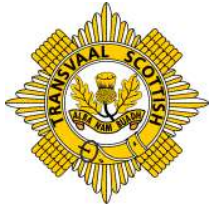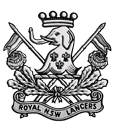| Johannesburg Light Horse Regiment | |
|---|---|
 SANDF Light Horse Regiment emblem | |
| Active | 21 September 1899 - |
| Country | |
| Allegiance | |
| Branch | |
| Type | Armoured Car Regiment |
| Part of | South African Armoured Formation Army Conventional Reserve |
| Garrison/HQ | Mount Collins in Sandton, Johannesburg |
| Motto(s) | Patria et Libertas (Country and Liberty) [1] |
| Equipment | Eland APC, Rooikat |
| Commanders | |
| OC Angola campaign | Commandant Roy L. Jackson |
| Insignia | |
| Beret Colour | Black |
| Armour Squadron emblems |  |
| Armour beret bar circa 1992 |  |
The Johannesburg Light Horse Regiment (JLHR), formerly the Light Horse Regiment (LHR) [2] and Imperial Light Horse (ILH), is an armoured car reconnaissance unit of the South African Army. As a reserve unit, it has a status roughly equivalent to that of a British Army Reserve or United States Army National Guard unit. It is part of the South African Army Armour Formation and is based at Mount Collins in Sandton, Johannesburg.

A military armoredcar is a lightweight wheeled armored fighting vehicle, historically employed for reconnaissance, internal security, armed escort, and other subordinate battlefield tasks. With the gradual decline of mounted cavalry, armored cars were developed for carrying out duties formerly assigned to horsemen. Following the invention of the tank, the armored car remained popular due to its comparatively simplified maintenance and low production cost. It also found favor with several colonial armies as a cheaper weapon for use in underdeveloped regions. During World War II, most armored cars were engineered for reconnaissance and passive observation, while others were devoted to communications tasks. Some equipped with heavier armament could even substitute for tracked combat vehicles in favorable conditions—such as pursuit or flanking maneuvers during the North African Campaign.

In military operations, reconnaissance(recon) or scouting is the exploration outside an area occupied by friendly forces to gain information about natural features and other activities in the area.

The South African Army is the army of South Africa, first formed after the Union of South Africa was created in 1910. The South African military evolved within the tradition of frontier warfare fought by Boer Commando (militia) forces, reinforced by the Afrikaners' historical distrust of large standing armies. It then fought as part of the wider British effort in World War II, but afterwards was cut off from its long-standing Commonwealth ties with the ascension to power of the National Party in South Africa in 1948. The army was involved in a long and bitter counter-insurgency campaign in Namibia from 1966 to 1990. It also played a key role in controlling sectarian political violence inside South Africa during the late 1980s and early 1990s.





























